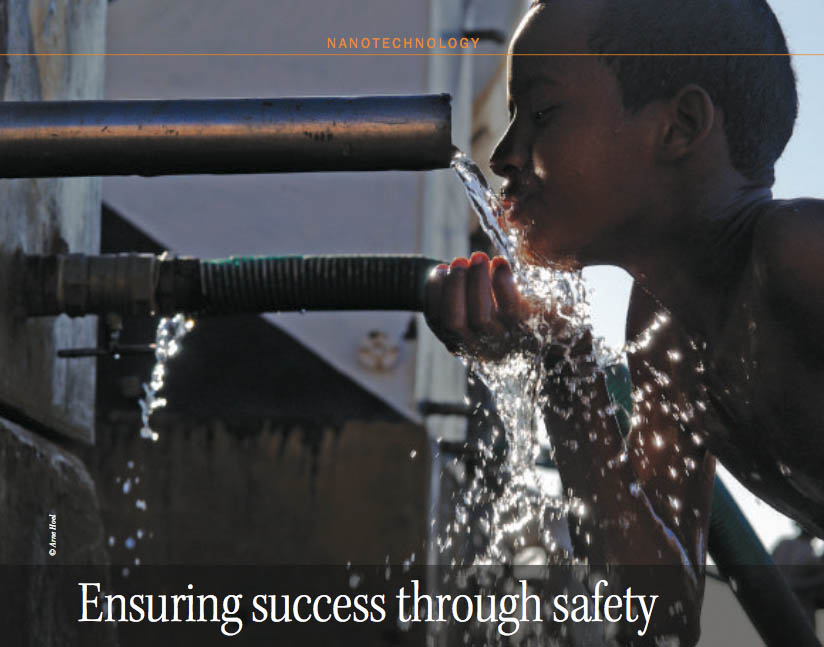This month’s issue of the magazine Science & Technology takes a closer look at some of the controversies, dilemmas and decisions that will impact on the future development of the science and technology of working at the nanoscale. Amongst the commentaries is a short piece I wrote about the importance of safety in underpinning successful and beneficial nano-enabled technologies:
Over the past few years, scientists and engineers have made huge strides in their ability to manipulate materials at the nanometer scale. Tapping into novel properties that emerge when substances are engineered at the nanoscale, they have begun to push conventional technologies further than was previously thought possible. And with this new-found dexterity, they are beginning to develop innovative new technologies that were unimaginable not so long ago. The result is a rapidly emerging toolkit of scientific knowledge and technical expertise that could have profound economic and social impacts around the world; creating jobs and wealth while addressing challenges that range from disease treatment and prevention to renewable energy and clean water.
As with any new technology, however, the promise of nanotechnology comes at a price. When materials are engineered at the scale of atoms and molecules they can behave in unconventional ways—in effect, the rules that apply to non-nanoscale materials begin to break down. This is what makes the technology so powerful. But it raises the possibility of products that can also cause harm in unconventional ways, which may not be captured by the usual approaches to dealing with human health and environmental risks. Unless these unconventional risks are understood and addressed, the future of nanotechnology could be dogged by uncertainties over safety and dwindling public trust.
Not every product of nanotechnology will present unconventional risks. But if a nanoscale substance can get to places in the body or the environment that are normally inaccessible, and is able to elicit a response following exposure that is influenced by shape and form at nanometer dimensions, new questions need to be asked on how harmful the substance is and how it can be used safely. Five years ago, these concerns were raised by the UK Royal Society and Royal Academy of Engineering. Since then, numerous reports have reiterated and expanded on the challenges being faced to developing safe nanotechnologies. Sadly, there has been substantially more talk than action.
Fortunately, there have been no documented cases of harm arising from exposure to engineered nanomaterials. But an increasing body of research indicates that some of these materials are potentially harmful if used without due care. Yet information is still lacking on what constitutes “due care” in many cases—especially with highly novel substances such as carbon nanotubes. And while global research into the potential health impacts of engineered nanomaterials is increasing, it still falls far short of what is needed to underpin evidence-based decision-making.
Recently, the US National Academies of Science called for a national research strategy for nanotechnology risk research, drawing on the expertise and perspective of multiple stakeholders. Coupled with adequate funding, such an approach could help bridge the gap between scientists and policy makers in developing safe nanotechnologies. Yet at the end of the day, even the best risk research strategies will not be of much use if the end users are suspicious of nanotechnology.
Experiences with genetically modified organisms have demonstrated the power of public opinion in determining whether a new technology succeeds or not. And while the similarities between nanotechnology and GMOs may be slim, it is clear that in today’s hyper-connected world, consumers have an increasingly strong voice. As a result, it is not sufficient to ensure the safety of nanotechnology-based products; public trust in the technology and the ability of government and industry to manage it safely must also be nurtured.
In many ways nanotechnology is a test-case for other emerging technologies. Countries and economies around the world are increasingly dependent on technology innovation. Yet the rules governing success are changing; driven by rapidly evolving global communications, ever-more pressing social and economic challenges, and an increasingly complex knowledge-base. Proactive risk research and public engagement are key not navigating through this changing landscape. Get them wrong and we face lost opportunities. But get them right and there is a chance that nanotechnology—and other emerging technologies—will deliver what they promise.
Originally published in Science & Technology Issue 3, June 2009, pp 66-67

